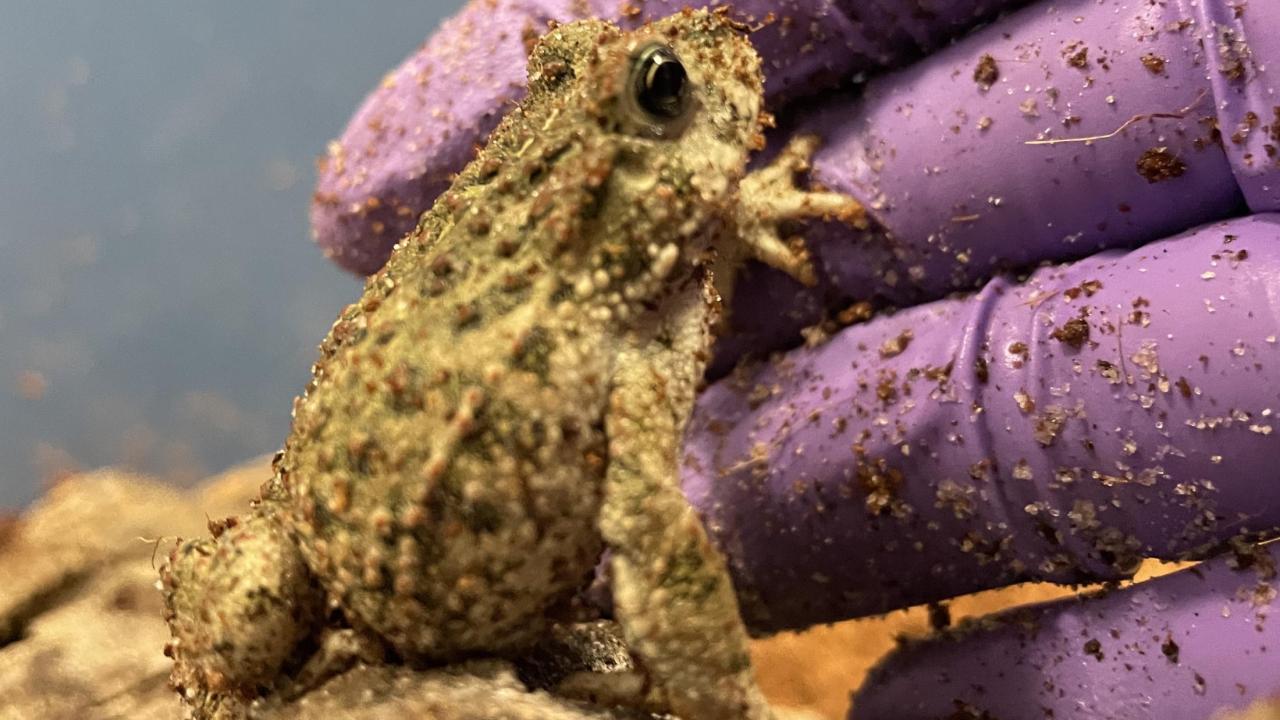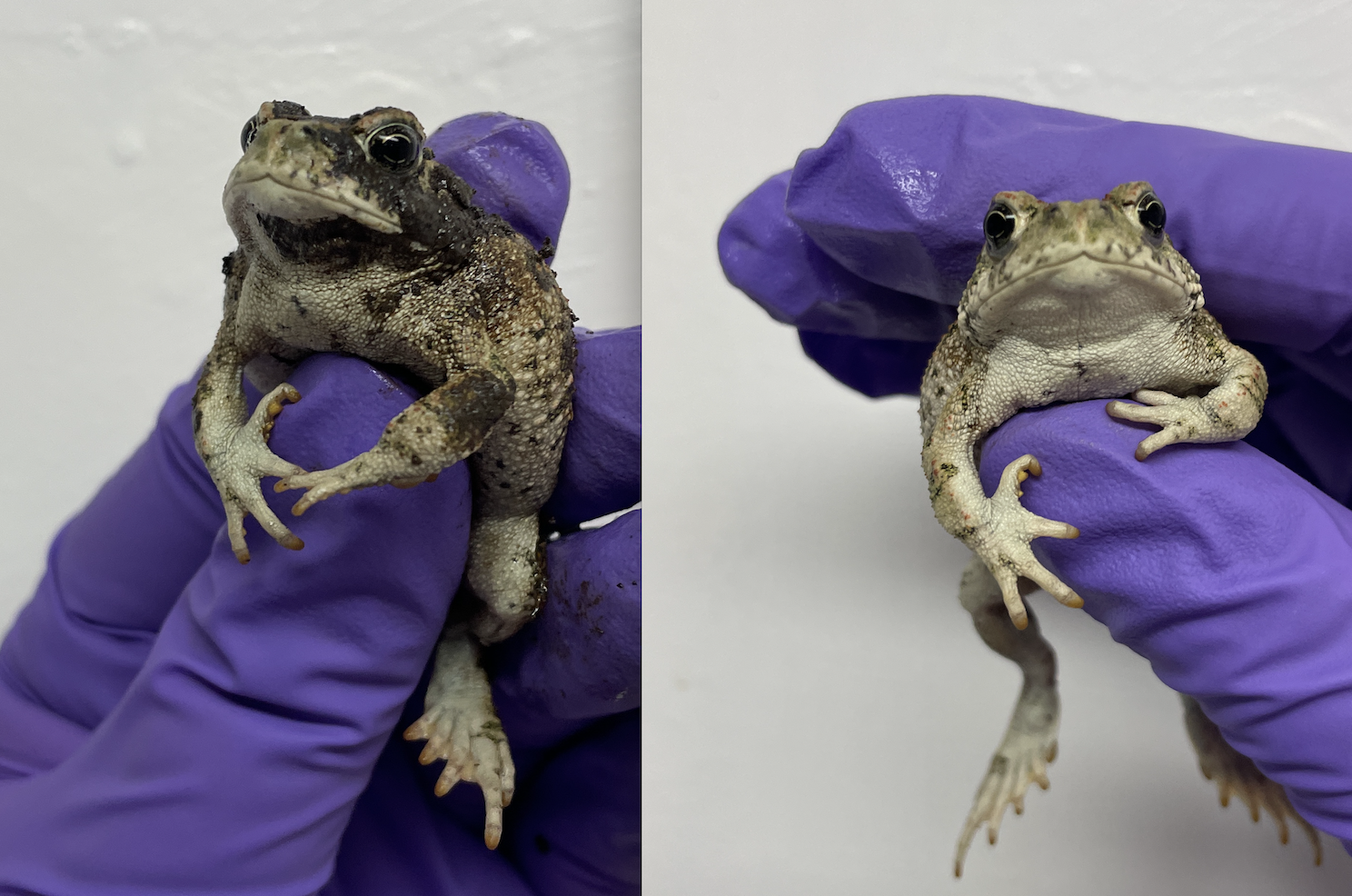
Five Days in Toad Mode
In early July, members of our Management Team responded to the Los Gatos Creek Incident in Coalinga. Field teams collected 94 oil-impacted Western Toads and 1 Western Spadefoot from the spill site across several days. The amphibians were transported up to UC Davis where staff washed, provided species-appropriate housing, and fed a diet of insects to the patients until their habitat was deemed clean and safe for their return. Of the 95 oiled toads collected, 94 survived and were released!

This is the OWCN's second significant oiled amphibian response in two years and the responses bear some striking similarities.
| Los Gatos Creek Incident 2023 | Toro Canyon Creek Incident 2021 | |
|---|---|---|
| Total # of Amphibians Collected | 95 | 94 |
| Release Rate % | 99% | 98% |
| Month | July | August |
| Housing Type | Group | Individual |
| Maximum Days in Care | 5 | 20 |
You can read more about the Toro Canyon Creek Incident in my previous blog post.
Oil and Amphibians
I enjoy telling people that we are responding to an oiled amphibian event and watching as they process what that could mean. Most people assume that delicate amphibian skin would offer little protection against petroleum contamination. Fortunately in a lot of cases, the opposite is true! Without feathers and fur contamination to worry about, an amphibian's primary risk in a crude oil spill is actually getting trapped in a sticky pool of the stuff. Once trapped, they would likely perish from hyperthermia or suffocation unless rescued very quickly. But for those animals who manage to avoid submersion in a pool of crude oil, we have observed that amphibian skin does provide some protection against spotty oil contamination. Tree frogs, for example, use their legs to wipe themselves down with lipids and mucus to limit evaporative water loss. This natural behavior seems to aid in removing the visible oil.
The toads of Los Gatos Creek did not perform this wiping behavior, but their thicker, bumpy skin offered some protection against the oil. In fact, the grittiness of the oil mixed with sand from their environment seemed to aid in the oil's removal during the wash process. Almost like an exfoliant body wash!
In contrast to crude oil, a refined oil product such as diesel would likely have vastly different effects on amphibians. Refined oils rapidly cause injury to delicate tissues and amphibians would be highly susceptible to burns. We have much to learn about the effects of oil on amphibians and I could go on and on, but I'd like to share more about the care we provided to the Los Gatos Creek toads.
Toad Care
The biggest difference in our care for the Los Gatos toads vs the Toro Canyon tree frogs is that we co-housed the toads. Our protocol is generally to individually house herptiles, but in this case we elected to co-house the Western toads by size for a few reasons:
- The toads were all juveniles. In this early life stage, they can be found in massive groups as they begin dispersing from their birthplace into the surrounding area.
- Larger enclosures offer a wider humidity gradient and more habitat furnishings. It is also easier to maintain several larger habitats vs 95 small ones.
- We were able to house them in groups of 4-10 based on their size. In groups this size, we were able to monitor competition and confirm that each animal was eating.
A few toads were housed individually so that we could monitor minor injuries that were noted upon intake exams. These injuries included mild bruising and small lacerations that did not require treatment. The Western Spadefoot was also housed separately. He/she was still absorbing their tail!
To our delight, the toads were fantastic eaters! During their stay with us they feasted on a buffet of vitamin-dusted crickets. We may have even boosted their long-term survival with those few days of food abundance.
Their enclosures were simple enough to create, but provided a microhabitat that perfectly met their needs. I used a mixture of sand and coconut fiber substrate. By propping up one side of each enclosure, spring water formed a shallow pond on one side. Dark PVC fittings, cork bark, and moss provided a variety of hides.
When their habitat was deemed safe for their return, the 94 surviving toads were transported back to Los Gatos Creek. This response was a team effort and we are toadally satisfied with the outcome. I'll take 100 oiled amphibians over 10 oiled birds any day!
